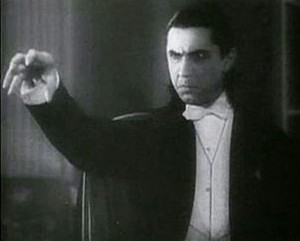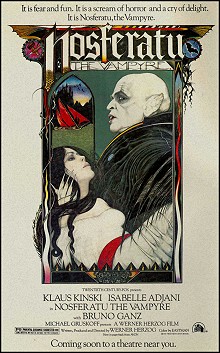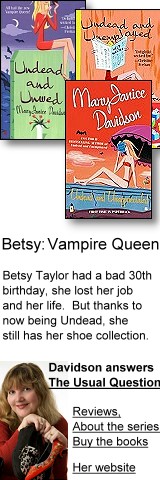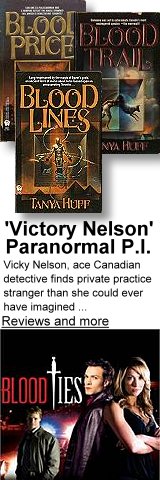Autumn 2015
The Enduring Immortal Vampire
"Listen to them - the children of the night. What music they make!" Seeing, I suppose, some expression in my face strange to him, he added:- "Ah, sir, you dwellers in the city cannot enter into the feelings of the hunter." -Dracula, Bram Stoker

Though vampire-like creatures have inhabited the folklore of cultures around the globe for eons, the vampire of modern literature is rooted in the pages of an Irish author's epic masterpiece published in the final years of the Victorian era. The enduring cultural significance of Dracula has lasted over a hundred years. As the character of Dracula has transformed over time in other popular media (comics, films, television), the vampire has transformed alongside him. Though many would protest that the modern vampire doesn't resemble the most popular of the undead creatures, it can be argued that even the more romanticized versions harken back to the Transylvanian count. The brutality and sensuality of the vampire creature appear to be at odds with each other, yet creates an efficient killer.
Dracula is a deftly crafted story of horror. The story is simple enough. Valiant heroes attempt to save the women they love and stop the bloodthirsty count. The readers' fascination with the elusive vampire villain immediately solidified his status as a horror icon and superseded all the literary vampires that had come before.

Stoker's narrative flows through a collection of letters, diary entries, newspaper clippings, and correspondence. Each entry gives the reader a glimpse into the inner workings of the characters while building the overall plot. Interestingly, Count Dracula's perspective never takes center stage and the motives for his actions are murky and masked by the presumption by his foes that he is merely evil.
Furthermore, Dracula is a mirror to Victorian society at the time. Advances in science, medicine and technology alongside cultural shifts are evident in the prose. The use of typewriters, telegrams, and the like are used to propel the story onward. Though Abraham Van Helsing has a rich knowledge of the supernatural, he's also a man of science who utilizes blood transfusions in an attempt to save the life of Lucy Wisteria, Dracula's first victim. His second known victim, Mina Harker, is a strong, intelligent woman, yet the men who surround her tend to treat her like a precious vessel, not an equal.
The subtext of negated sexual desire is also interwoven into the story through depictions of Dracula's seduction of Mina. At one point, he drinks from her throat while she lies in bed next to her husband.
Dracula is an aristocrat, wealthy, handsome, and cunning, but he is also a foreigner. His presence in Victorian England is unsettling and causes the main cast some distress. Though Van Helsing and Quincy Morris are not English, (but Dutch and Texan), Dracula and his spread of vampirism-regarded as the corruption of purity-can be interpreted as xenophobia.
Stoker's Dracula was not the first vampire tale to use horror as a contrivance to criticize social constructs. Vampires had been a phenomenon before the novel was published. So called "true stories" about vampires had been the rage in the early part of the 19th century, but it was a fictional vampire that set the stage for Stoker's later work.

Varney the Vampire was a very popular penny dreadful that was considered low-brow and sensational during its publication run in the mid-1800's. It wasn't particularly coherent in its plot, but it did contain many of the vampire trappings that would also populate Stoker's novel. Varney was a more sympathetic creature than Dracula, though his true intentions are never clearly revealed.

Carmilla by Sheridan LeFanu also predates Dracula. It's a sumptuous gothic read with sexual undertones. Carmilla is enigmatic, powerful, and obsessed with her victims. Thinly veiled lesbianism permeates the story, yet was allowed due to the supernatural nature of Carmilla.
John Polidori's handsome, charismatic, and cruel Lord Ruthven, in his short story The Vampyre, is a thinly veiled depiction of Lord Byron. Polidori was particularly ruthless in his evaluation of Byron's character due to their difficult friendship. Polidori was half-English, half-Italian, he often felt set apart from Bryon's inner circle. In the story, the vampire weaves a web of deceit that captures the narrator and results in the death of his beloved sister.
All four vampires in these tales are aristocrats, attractive, and cruel. Young, beautiful innocent women are the chosen prey of the vampires and they slowly corrupt their victims over time as they feed from them. The objects of their long lasting desire were often another aristocrat, but they'd feed and kill working class people. It was a pointed commentary on the disparity between the aristocracy and those who worked for them.
Though other works had already addressed these themes, Stoker perfectly captured the essence of the vampire and the world it exists within. The cruelty of power. The sensuality of forbidden lust. The terror of the supernatural. The obsession of the hunter. The battle between science and the mystical.

Dracula would continue to dominate the vampire genre in other media. The first film based on Dracula, Nosferatu, was filmed without permission by Stoker's widow, Florence Balcombe. She sued successfully for copyright infringement and demanded all prints of the film be destroyed. Later, her husband's novel would become a popular play that would be adapted to screen by Todd Browning. Bela Lugosi's portrayal of the sophisticated, yet cruel vampire enthralled the movie goers and made him a horror icon.
Dracula, and pale imitations of him, would continue to live on in celluloid for the next few decades. The vampire remained unchanged during this time, never altering from the charming handsome killer. In the future, the vampire would undergo radical changes in the perception of the audience, yet remain somewhat tethered to the most famous of the undead.
In 1954, Richard Matheson changed the face of the literary vampire with his masterpiece, I Am Legend. I Am Legend is one of the most influential stories in the horror genre. The vampires in the story were not supernatural but victims of a virus. Like Bram Stoker, Matheson drew on the cultural landscape of his time. In the aftermath of World War Two, the Cold War had taken root. Paranoia over the events unfolding on the global stage had a firm grip on people's minds. The concept of a pandemic and worldwide apocalypse were born in I Am Legend. Matheson's novella would give birth to the zombie genre. George A. Romero cited it as his influence for his film, Night of the Living Dead.
Though other books would also attempt to provide a scientific explanation for vampires in the decades to come-such as Tanya Huff's Blood Books-Matheson's I Am Legend remains the pinnacle of this deviation in the vampire mythos. Though the supernatural aspect of the creature is removed, the touchstones of Stoker's novel remain. The societal commentary, the fear of the unknown, the corruption of purity, etc.

In 1976, Anne Rice returned the vampire to its supernatural form and embraced its aristocratic origins with Interview with the Vampire. The vampire Lestat is most likely the closest challenger to Dracula's preeminence. Both are aristocrats, cruel, handsome, and charismatic. Like Stoker, Rice created a rich world filled with the cruel undead. The sumptuousness of her writing, coupled with undercurrents of repressed sexual longing, loss of faith, and isolation, created a story that captivated a whole new audience. The LGBT community embraced the book wholeheartedly and made Rice a cultural icon. The author's struggles with faith and religion projected through Louis mirrored the huge cultural shifts happening during the time period.

Another vampire novel would not capture the attention of readers with quite the same fervour until Twilight in 2005. The Young Adult novel was highly criticized for its prose, but became a sensation that lasted through four books and five films. Many vampire aficionados accused the book of deviating too much from the vampire mythos, but when examined closer, it does strike a lot of the same beats as its popular predecessors. Edward's obsession with Bella matches the fervour in which Dracula pursues Lucy, then Mina. Though the vampire never reveals his fangs, he is a blood drinker and possesses supernatural abilities. Many point at Edward's ability to be in the sunlight, but Dracula was also able to walk about in the day, though his powers were diminished. Twilight successfully portrayed the human yearning for deep connection, romance, and eternal love. Stephanie Meyer perfectly tapped into the basic need to feel special and wanted and created a cultural phenomenon. As one T-shirt so eloquently put it, "Vampires will love you forever." Many other authors in the YA genre would follow with their own teenage vampire series, but none have reached the heights of Meyer's works.
In the years since the Twilight craze, there have been attempts to return the vampire to its more violent past. Guillermo del Toro and Chuck Hogan's The Strain couples the supernatural and science with the vampire virus spreading through blood. The Passage by Justin Cronin also deals with a post-apocalyptic landscape brought on by a vampire virus. Like Matheson's I Am Legend, the books capture the communal fear of a global disaster such as a pandemic.

In my own writing, I have struggled to find the balance between the various aspects of the vampire. I have three different series that depict vampires. The Dark Rebirth Trilogy (The Tale of the Vampire Bride, The Vengeance of the Vampire Bride, and the upcoming Lament of the Vampire Bride) is entrenched in the gothic roots of the vampire and takes place during the Regency era. Lady Glynis Wright is an aristocrat who unwillingly becomes the bride of Dracula, and the trilogy is the telling of her attempts to fully escape his power. The Pretty When She Dies trilogy (Pretty When She Dies, Pretty When She Kills, Pretty When She Destroys) is a modern tale of a young woman finding empowerment through her transformation. Amaliya's alternative look, complete with tattoos and piercings, devil-may-care attitude, and penchant for raising zombies makes her an unusual heroine. With In Darkness We Must Abide, another modern tale, I embraced the more romantic aspect of the vampire, but they're still quite dangerous, even the good ones.
Dracula wasn't the first popular vampire novel, but its lasting impact on the horror genre (both literary and film) and pop culture continues to this day. Though many have tried to declare the vampire genre dead and buried, it always rises again. Even when the vampire appears to fall from grace, it is always a matter of time before another variation of the bloodsucking fiends captures the imaginations of readers.
Like Dracula, no matter how many times people attempt to kill the vampire genre, it will never truly die.

Rhiannon Frater is an American author of horror fiction. Rhiannon lives in Austin, Texas with her husband and is now a full-time writer.
Or on facebook
See also in this series:
The Immortal Enduring Vampire by Rhiannon Frater
Get Ready Cyberfunkers: Black Science Fiction by K. Ceres Wright
Defining Horror by Jeani Rector
Steampunk: A Marvellous Excursion by Michael Pryor
Female Private Eyes in Fiction: From Lady Detectives to Hard-Boiled Dames by Colleen Collins
The Good, the Bad and the Ugly: Western Writing by Julia Robb
Grand Tradition Science Fiction: Stories that Want to Have Fun, by Bascomb James
Unintended Invention: The Fantasy of Manners, by Ellen Kushner
For posts about Melbourne events, places, news, reviews, giveaways, see our Facebook Page:








 Published in Melbourne, Victoria, Australia
Published in Melbourne, Victoria, Australia